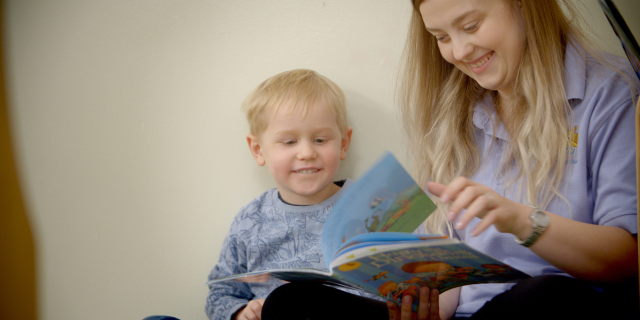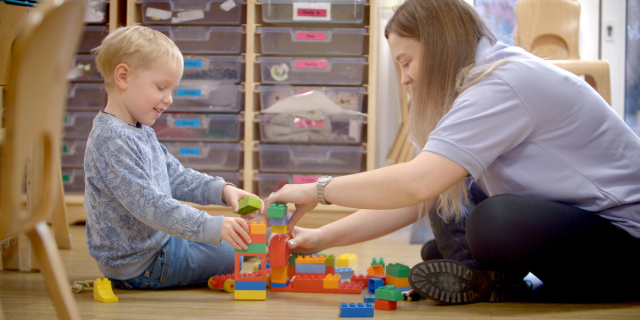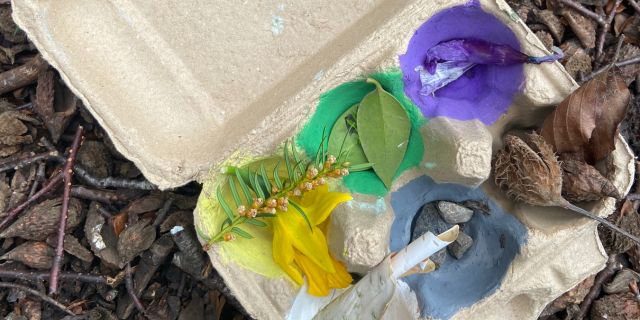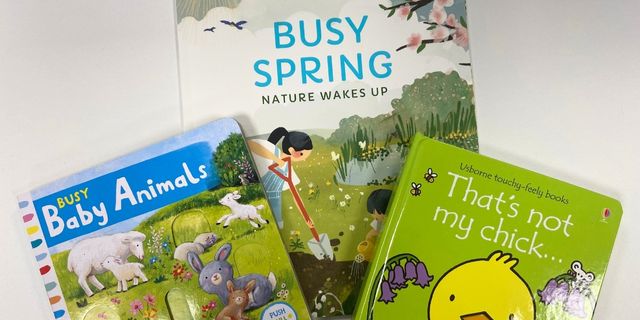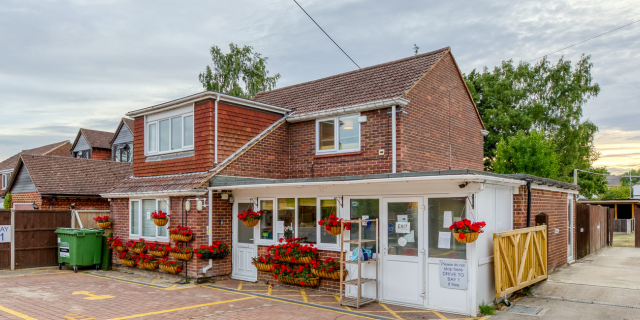School Readiness at Home
School Readiness Programme: I can confidently separate from my parent/carer
School Readiness at Home

The biggest possible change for children making the transition into school is the rush of sudden independence. You leave your little one at the gate and off they go. Former preschool children may find the initial departure from the arms of their parents a little easier, but eventually they will notice the difference when introduced to a structured setting involving a decreased ratio of children to adults.
Due to the Coronavirus the planned transition to school for your child will be different this year, we understand that this will make you feel nervous, particularly in relation to them having the confidence to separate from you when they initially start, especially after spending so much quality time with you. This is a natural feeling so please do not worry. Remain positive when talking to your child about starting school as children will pick up on your emotions.
If your child is enrolled with Kiddi Caru Day Nurseries Group, then they will have spent time away from you. During this time, they had the opportunity to develop their personal, social and emotional skills which help to build self-confidence and self-esteem. You can continue to encourage these skills at home, ensuring your child has both the social and practical skills to succeed at school.
Remember every child is different, some children may settle into school quickly whilst others may take a little longer and need additional support. This is completely natural, and we have put together the following steps to help make the separation for you and your child as smooth as possible.
How can this process be made easier?
- Use your daily walk to go via your child’s school. Use the walk to discuss your child’s feelings towards school and start to build positive associations, such as pointing out the play grounds, how close it is to your house, the new friends they will make and the fun things they will learn.
- Books are a great resource to introduce the concept to your child. Also, you can reference the characters and situations when talking about your child’s concerns and how they are resolved. You can also ask your child questions such as, ‘Do you think Lucy the Elephant was worried about starting school?’ rather than ‘Are you worried about starting school?’ as your child may respond better to indirect questions. We have a list of top books about starting school which are all available from Amazon.

- Going to School
- Charlie and Lola – I am too absolutely small for school
- Starting School
- Max and Millie start school
- Bobbo goes to school
- Martha & the bunnies: I Heart School
- Harry and the Dinosaurs Go to School
- Billy and the Big New School
- Topsy and Tim Start School
- Lots of things to spot at school
- I’m going to school
- Going to School
- Never Take a Bear to School
- Alfie at Nursery School
- Visit your child’s School website, look at their images and see if they have a virtual tour that you can take together to discuss the different classrooms and where they will go to play and eat.
- You can also take a look online at what their school uniform logo will look like and discuss the different options they can choose from.
- Give your child responsibilities, this will encourage their sense of independence and develop their confidence. Make sure to support and encourage them to persist when solving problems, especially challenging ones, rather than solving problems for them. This can be done by breaking tasks down into smaller steps to ensure your child is successful.
- Celebrate your child’s efforts and achievements – praise is a key strategy in promoting positive behaviour, it demonstrates to your child that you have recognised their efforts and achievements which will build their self-esteem and confidence.
- Establish a routine with clear boundaries and expectations to ensure your child feels safe, secure and confident. Check out our Visual Timetable Activity below!
Activity: Kiddi Caru Visual Timetables
Visual timetables are made up of sequences of pictures, photos or symbols which represent the plan for your and your child’s day. These images should be individual for your child’s routine and home environment. You can even have a discussion with your little one to decide on the image they associate most with different times of day, such as a knife and fork for dinner time and a ball for outdoor play.
You can attach the images to a piece of card on a Velcro strip. This will make it easier for you to move the images when your routine changes day to day. Depending on where you are going to display your visual timetable, you can place the images from left to right, or top to bottom. However, it is best if you can position the timetable to be accessed by your child.
How we use Visual Timetables in Nursery
Visual timetables are a great tool to help the preschool children understand their daily routine and what is expected of them.
Children respond well to a routine and you can help to alleviate their anxiety and frustration by including them in the daily routine, so they can understand what is going to happen now and later.
The visual timetable also helps your child to understand when something is finished. This helps them to understand transitions from one activity to another. This is an important lesson for them to learn in preparation for school, as they are encouraged to enjoy free play in the early years at nursery, where they play with whatever they want, for as long as they want. However, once they go to school they must follow their teachers’ instruction on what to do and when activities must end to start working on something different. The visual timetable is a gentle introduction where children can get used to moving from one activity to another at certain times of day.
How can I use a visual timetable with my child at home?

Download
Work with your little one to create your visual timetable at home, explaining all the while what you will be using it for and answering any questions they may have. If they already attend a nursery within the Kiddi Caru Day Nurseries Group, they may already recognise it.
- Display the visual timetable at your child’s level and keep it in the same place every day, so your child knows where to access it.
- At the beginning of the day discuss your morning routine with your child. For example: breakfast, get dressed, brush your teeth, story time, outdoor play, cooking activity, then lunch time. Make sure to have a photo or image to go along with every activity.
- If you work from home, you can include a picture of your ‘work time’, and display it on the timetable to show your little one what you need to do throughout the day, and potentially explain why you cannot play with them at certain times.
- Prior to each activity, show the picture of the activity to your child, explain what it is you will be doing and then carry on with the fun! You can use an arrow or pointer to move along the visual timetable.
- Continue with this sequence until the morning routine is time completed. This sequence can be repeated in the afternoon to include a bedtime routine.
The visual timetable is best for children over 3 years old. For children under the age of two, a now and then board can be used in the same way to give them a more general idea of the routine, covering larger areas of time, such as breakfast, playtime, lunch, nap time, outside play, dinner time, then bedtime.
We would love to see the visual timetables you make with your little one and receive feedback on how your child is finding the timetable. Make sure to share with us by tagging @KiddiCaru on Facebook, Instagram and Twitter with the hashtag #visualtimetable
Activity: Starting School Box
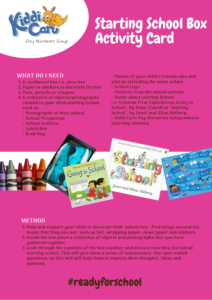 Just like adults, the more children know about school and what to expect, the more confident they will feel. Children learn best through play and fun, so why not create a ‘Starting School Box’?
Just like adults, the more children know about school and what to expect, the more confident they will feel. Children learn best through play and fun, so why not create a ‘Starting School Box’?
You can have them decorate it as part of a fun art and craft activity, using a variety of tools and items around the house. As well as, collate a range of items to go inside to help them understand more about their school and the friends that may be going there too.
Download
Share this article
Related blog/news
Swipe to see our latest articles.
